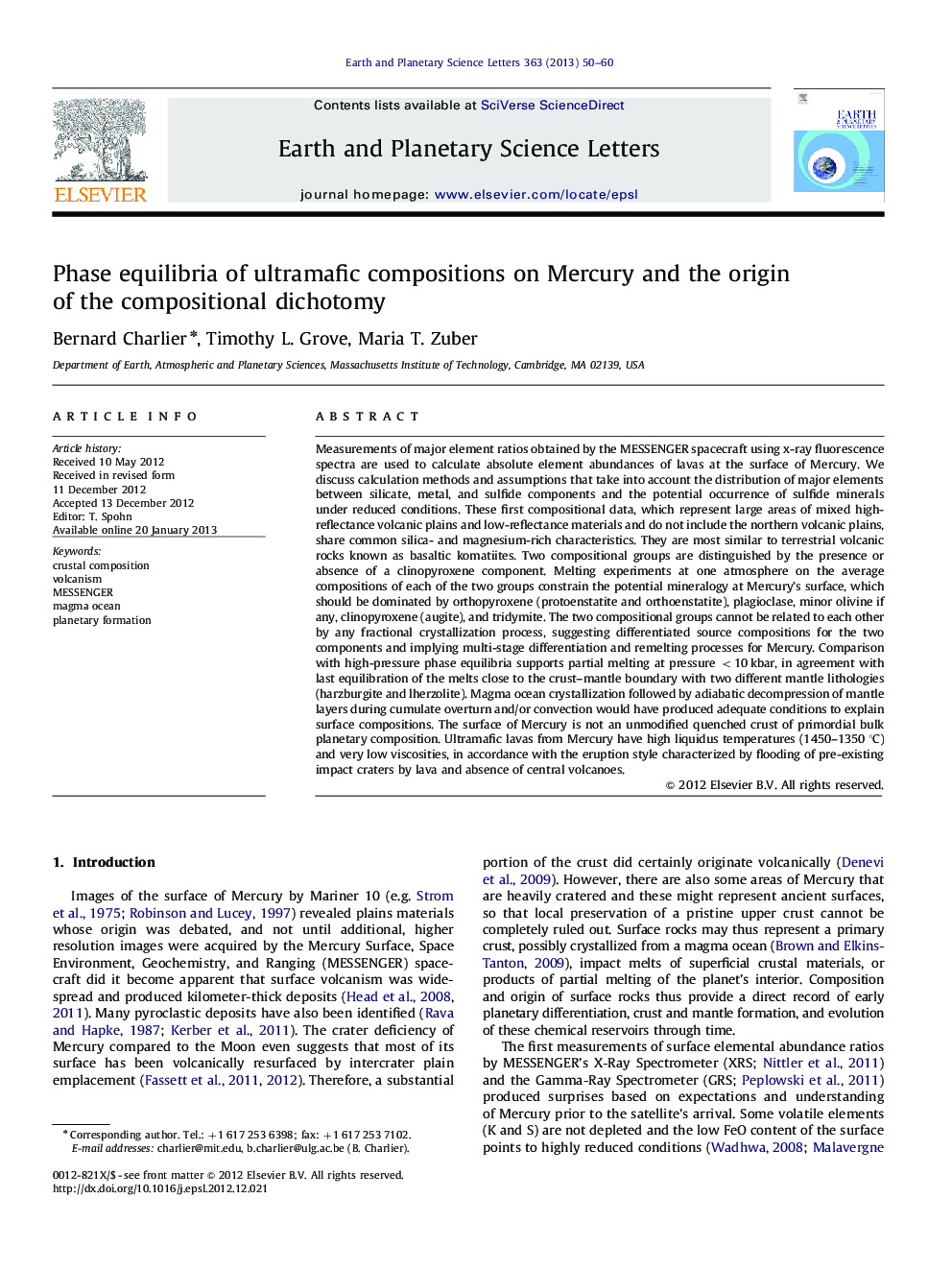| کد مقاله | کد نشریه | سال انتشار | مقاله انگلیسی | نسخه تمام متن |
|---|---|---|---|---|
| 6430427 | 1634790 | 2013 | 11 صفحه PDF | دانلود رایگان |
Measurements of major element ratios obtained by the MESSENGER spacecraft using x-ray fluorescence spectra are used to calculate absolute element abundances of lavas at the surface of Mercury. We discuss calculation methods and assumptions that take into account the distribution of major elements between silicate, metal, and sulfide components and the potential occurrence of sulfide minerals under reduced conditions. These first compositional data, which represent large areas of mixed high-reflectance volcanic plains and low-reflectance materials and do not include the northern volcanic plains, share common silica- and magnesium-rich characteristics. They are most similar to terrestrial volcanic rocks known as basaltic komatiites. Two compositional groups are distinguished by the presence or absence of a clinopyroxene component. Melting experiments at one atmosphere on the average compositions of each of the two groups constrain the potential mineralogy at Mercury's surface, which should be dominated by orthopyroxene (protoenstatite and orthoenstatite), plagioclase, minor olivine if any, clinopyroxene (augite), and tridymite. The two compositional groups cannot be related to each other by any fractional crystallization process, suggesting differentiated source compositions for the two components and implying multi-stage differentiation and remelting processes for Mercury. Comparison with high-pressure phase equilibria supports partial melting at pressure <10 kbar, in agreement with last equilibration of the melts close to the crust-mantle boundary with two different mantle lithologies (harzburgite and lherzolite). Magma ocean crystallization followed by adiabatic decompression of mantle layers during cumulate overturn and/or convection would have produced adequate conditions to explain surface compositions. The surface of Mercury is not an unmodified quenched crust of primordial bulk planetary composition. Ultramafic lavas from Mercury have high liquidus temperatures (1450-1350 °C) and very low viscosities, in accordance with the eruption style characterized by flooding of pre-existing impact craters by lava and absence of central volcanoes.
⺠We use X-ray spectrometer elemental ratios at the surface of Mercury from MESSENGER. ⺠A compositional dichotomy is identified based on Ca and Al concentrations in surface rocks and on absence or presence of calculated clinopyroxene component. ⺠Crystallization experiments constrain the mineralogy to be dominated by orthopyroxene. ⺠Surface compositions were produced by partial melting of two different mantle sources. ⺠Magma ocean crystallization was followed by cumulate overturn and/or convection.
Journal: Earth and Planetary Science Letters - Volume 363, 1 February 2013, Pages 50-60
